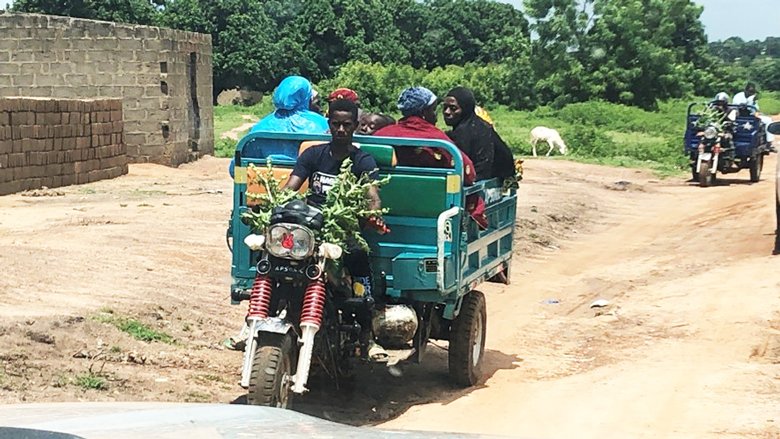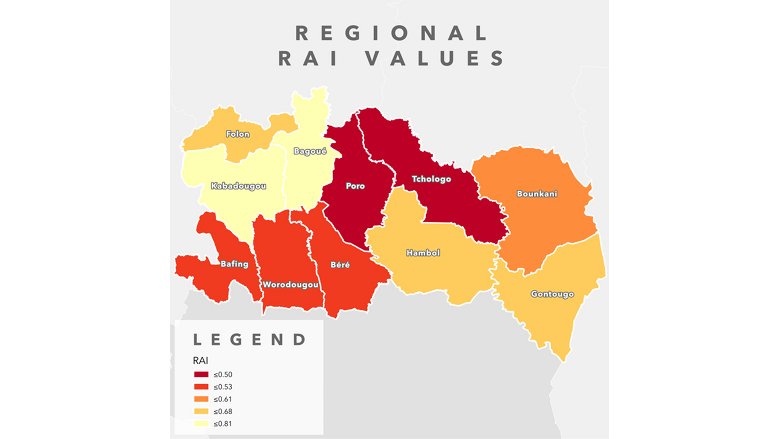Challenge
The 11 northern regions of Côte d'Ivoire face conflict, violence, as well as adverse impacts from climate change. They lag other regions in terms of poverty alleviation, human capital development, and gender disparities. Physical isolation and a lack of access to basic social services and economic opportunities are key determinants of poverty in the targeted regions. Rural roads are essential in the development of the region. Despite significant progress in recent years, there was no clear strategy that could support the Government in determining investment priorities in the sector to ensure more inclusive development.
Approach
This new strategy would help to improve access to basic socioeconomic facilities (schools, health centers, and markets). The study was produced in 2021 and is in line with the Bank’s strategy to understand poverty, infrastructure, and the socioeconomic dynamics of lagging regions in Côte d’Ivoire. It was undertaken in parallel with some other studies (including an ASA on urban development, a Poverty Assessment, a Human Capital Diagnostic, and a Digital Economy Assessment), all of which pointed to the need for greater connectivity in the northern part of the country. Finally, it is fully aligned with the country's National Development Plan (Plan National de Développement) for 2021-2025.
Results
The study concluded that improved roads could support a cross-sectoral strategy by offering a unique platform to group investments based on a holistic approach, thereby incorporating education, health, agriculture, resilience to conflict, and climate change. The study’s findings and the prioritization framework are being used as a basis for the preparation of a new investment operation in the country. The study also highlights several critical aspects in which rural connectivity can be a game changer in achieving development outcomes. The main recommendations included:
- Implement a two-stage programming approach, with resources allocated first at the national level and then at the regional level to determine the strategic prioritization of improving roads. Resources would be allocated between regions based on their level of connectivity.
- Establish a more sustainable framework for road maintenance, establishing a coordination mechanism between the various stakeholders, and increasing resources dedicated to road maintenance.
- Select strategic roads to facilitate access to basic social facilities and collection points for agricultural products. This would be based on a Modified Road Accessibility Index (MRAI) considering a 5-kilometer (km) buffer zone, instead of the usual Road Accessibility Index (RAI, that is, a 2- km buffer zone).
- Provide incentives for transport services (for example, support to farmer organizations for acquiring tricycles used to transport agricultural produce to collection points).
- Eliminate all existing traffic disruption points to guarantee a minimum level of road access for the entire population.
- Improve infrastructure that can serve as an enabler for increased access to markets for agricultural production and social services, such as health facilities and schools.
Bank Group Contribution
The study was supported by a Bank Budget of $100,000 and was completed in 2021. It was supported by staff from various sectors, including the Digital, Agriculture, Health, Poverty and Education sectors.
Partners
The study benefited from a strong partnership with the Government of Côte d'Ivoire and its Agence de Gestion des Routes (AGEROUTE), the national road agency. Regarding health and education data, the study relied heavily on data from the statistical services of the relevant line ministries and the National Institute of Statistics.
Looking Ahead
The study's findings and recommendations are being used to design the $300 million Northern Côte d'Ivoire Inclusive Connectivity and Rural Infrastructure Project, which is currently under preparation. This study is an example of how strategic technical assistance can be instrumental in creating investment opportunities for further development while also aligning with broader multi-sectoral policy goals.
Road Accessibility Index according to region, 5-km buffer zone.
Source: Team analysis, based on data from AGEROUTE.

